Connolly, Johnny (2007) Drug-crime statistics. Drugnet Ireland, Issue 23, Autumn 2007, pp. 16-17.
| Preview | Title | Contact |
|---|---|---|
|
PDF (Drugnet Ireland, issue 23)
- Published Version
1MB |
Until 2006, the principal source of information on drug offences was the annual reports of the Garda Síochána. In 2006, responsibility for reporting crime statistics was transferred to the Central Statistics Office (CSO). The CSO has published some data on drug offences and drug seizures on a Garda divisional basis; more detailed data will be made available once the Garda data have been fully examined (CSO, personal communication, 2007).
The vast majority of drug offences reported come under one of three sections of the Misuse of Drugs Act (MDA) 1977: section 3 – possession of any controlled drug without due authorisation (simple possession); section 15 – possession of a controlled drug for the purpose of unlawful sale or supply (possession for sale or supply); and section 21 – obstructing the lawful exercise of a power conferred by the Act (obstruction). Other MDA offences regularly reported on relate to the unlawful importation into the State of controlled drugs contrary to section 21; permitting one’s premises to be used for drug supply or use contrary to section 19; the use of forged prescriptions (section 18); and the cultivation of cannabis plants (section 17).
Figure 1 shows trends in the numbers of drug supply, possession and total drug offence prosecutions between 2000 and 2006. The majority of prosecutions are for drug possession, which have risen steadily since 2003 and accounted for 73.2% of the total drug offences prosecuted in 2006. The number of simple possession offences increased from 7,432 in 2005 to 8,556 in 2006. The number of supply offences leading to a prosecution in 2006 was 2,525, representing 21.6 % of the total number of offences prosecuted.
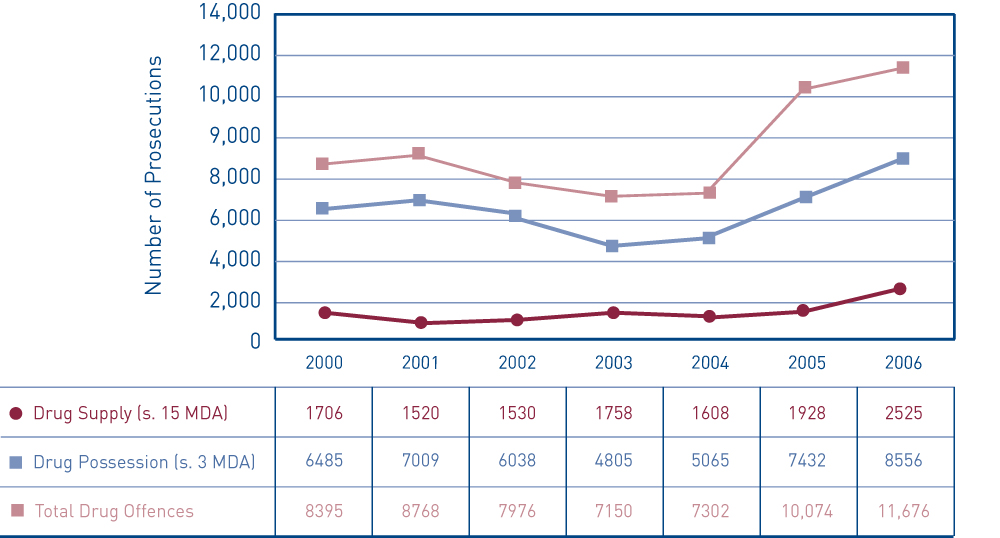
Figure 1 Trends in possession (s.3 MDA), supply (s.15 MDA) and total drug offence prosecutions, 2000–2006
Source: Annual reports of An Garda Síochána 2000–2005; Central Statistics Office 2006
Figure 2 shows trends in prosecutions for a selection of other offences where proceedings commenced between 2000 and 2006. Prosecutions for obstruction increased by 704% between 2000 and 2005, and decreased from 479 in 2005 to 373 in 2006. Prosecutions for cultivation or manufacture of drugs increased by 200% between 2005 and 2006.
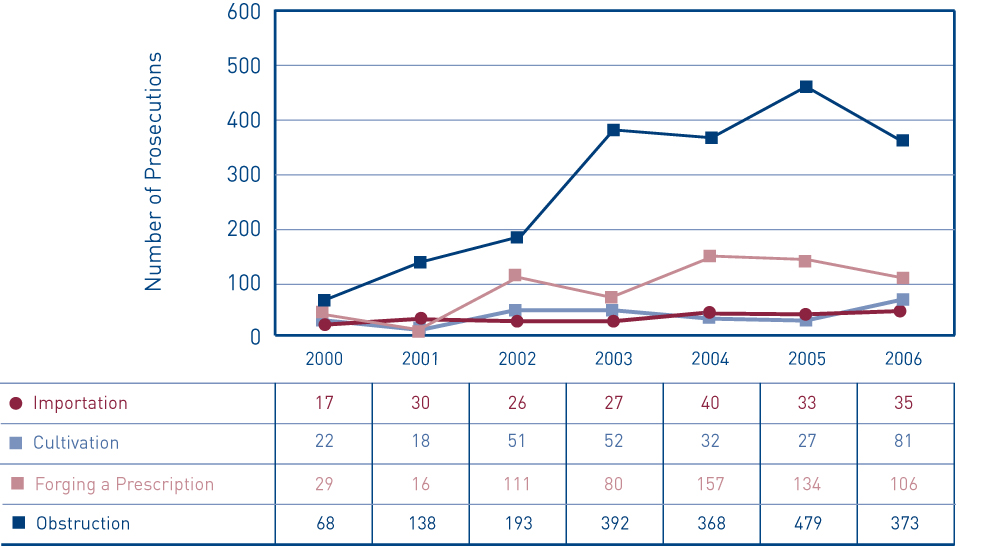
Figure 2 Selected MDA offences, excluding possession and supply, where proceedings commenced, 2000–2006
Source: Annual reports of An Garda Síochána, 2000–2005; Central Statistics Office 2006
With regard to the importation and internal distribution of drugs – the middle market – data on drug supply offence prosecutions by Garda division are a possible indicator of distribution patterns.1 While these data primarily reflect law enforcement activities and the relative ease of detection of different drugs, they may also provide an indicator of national drug distribution trends and whether, for example, there is a concentration of prosecutions along trafficking routes. Figure 3 shows the number of prosecutions for drug supply offences in Garda regions outside the Dublin Metropolitan Region (DMR).
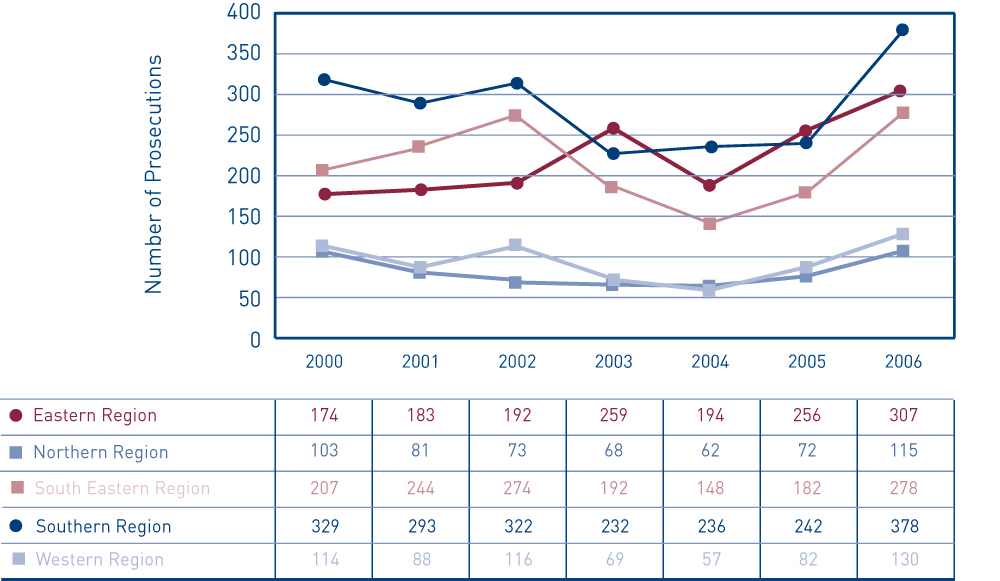
Figure 3 Drug supply (s.15 MDA) offences outside the DMR where criminal proceedings commenced, 2000–2006
Source: Annual reports of An Garda Síochána 2000–2005; CSO, personal communication, July 2006
The upward trend since 2004 in prosecutions for drug supply continued in 2006 (Figures 3 and 4). Although the majority of such prosecutions still take place in the DMR, the proportion of the total number which take place outside the DMR has increased since 2004 (Figure 4).
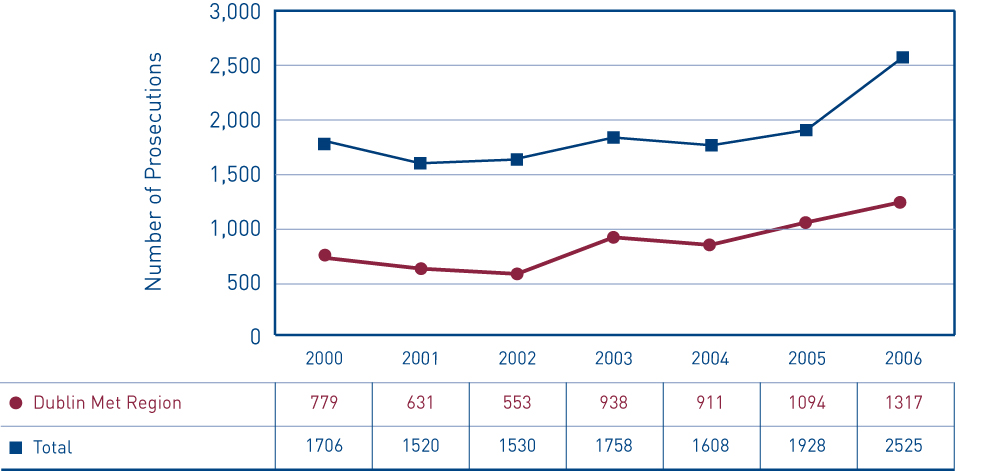
Figure 4 Trends in total drug supply prosecutions and those in the DMR, 2000–2006
Source: Annual reports of An Garda Síochána 2000–2005; CSO, personal communication, July 2006
Although the number of drug seizures in any given period can be affected by such factors as law enforcement resources, strategies and priorities, and by the vulnerability of traffickers to law enforcement activities, drug seizures are considered as indirect indicators of the supply and availability of drugs. Data presented below on trends in the number of drugs seized by drug type are derived from the annual reports of An Garda Síochána, which has retained responsibility for reporting this specific data.
Cannabis seizures account for the majority of all drugs seized. Of the 7,550 reported drug seizures in 2006, 3,853 (51%) were cannabis-related. Figure 5 shows trends in seizures of a number of selected drugs, excluding cannabis, between 2000 and 2006. We can see a continuous steady rise in cocaine seizures and a sharp rise in heroin seizures, from 725 in 2005 to 1,115 in 2006. The number of seizures of ecstasy-type substances also rose in 2006, following a steady decline since 2000.
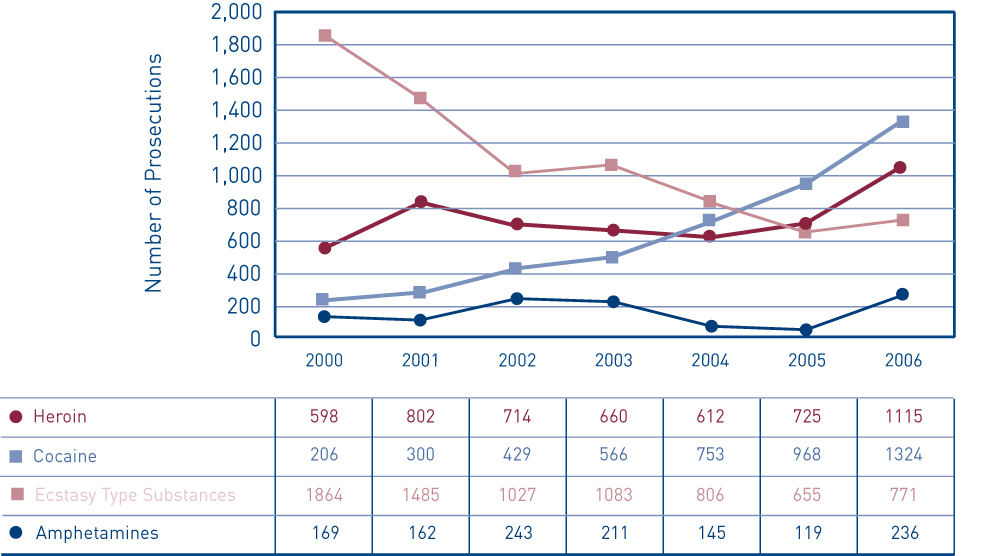
Figure 5 Trends in the number of seizures of selected drugs, excluding cannabis, 2000–2006
Source: Annual reports of An Garda Síochána 2000–2006
1. Connolly J (2005) The illicit drug market in Ireland. Overview 2. Dublin: Health Research Board.
Repository Staff Only: item control page